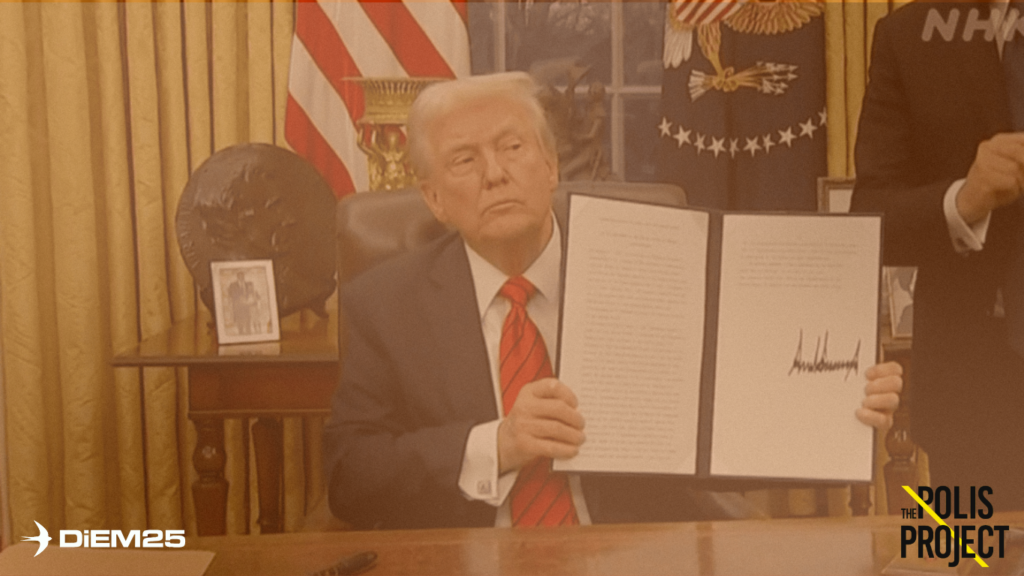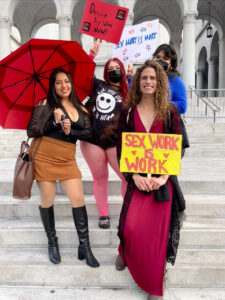
- Columns / Essay / Partnership / Quick Reads
Donald Trump’s Master Economic Plan I Opinion by Yanis Varoufakis

DiEM25 (@diem25.org), the pan-European political movement co-founded by Yanis Varoufakis, and The Polis Project, which documents global communities in resistance at the intersection of politics, art, and culture, are thrilled to announce a new collaboration.
Together, we are committed to addressing urgent political realities by building and strengthening our communities through shared knowledge and solidarity.
This partnership seeks to amplify the work of both organizations through co-publishing, joint initiatives, and engaged dialogues—fostering deeper, more inclusive conversations on contemporary politics, justice, and resistance. From empire and colonialism to systemic inequality, we aim to provide fresh, cross-border perspectives on the most pressing issues of our time.
In solidarity, we will promote diverse voices, challenge dominant narratives, and imagine alternative futures grounded in justice, care, and collective action.
Faced with United States president Donald Trump’s economic moves, his centrist critics oscillate between desperation and a touching faith that his tariff frenzy will fizzle out. They assume that Trump will huff and puff until reality exposes the emptiness of his economic rationale. They have not been paying attention: Trump’s tariff fixation is part of a global economic plan that is solid — albeit inherently risky.
Their thinking is hard-wired onto a misconception of how capital, trade and money move around the globe. Like the brewer who gets drunk on his own ale, centrists ended up believing their own propaganda: that we live in a world of competitive markets where money is neutral and prices adjust to balance the demand and the supply of everything. The unsophisticated Trump is, in fact, far more sophisticated than them in that he understands how raw economic power, not marginal productivity, decides who does what to whom — both domestically and internationally.
Though we risk the abyss staring back when we attempt to gaze into Trump’s mind, we do need a grasp of his thinking on three fundamental questions: why does he believe that America is exploited by the rest of the world? What is his vision for a new international order in which America can be “great” again? How does he plan to bring it about? Only then can we produce a sensible critique of Trump’s economic masterplan.
So why does the president believe America has been dealt a bad deal? His chief complaint is that dollar supremacy may confer huge powers on America’s government and ruling class, but, ultimately, foreigners are using it in ways that guarantee US decline. So what most consider to be America’s exorbitant privilege, he sees as its exorbitant burden.
Trump has been lamenting the decline of US manufacturing for decades: “if you don’t have steel, you don’t have a country.” But why blame this on the dollar’s global role? Because, Trump answers, foreign central banks do not let the dollar adjust downwards to the “right” level — at which US exports recover and imports are restrained. It is not that foreign central bankers are conspiring against America. It is just that the dollar is the only safe international reserve they can get their hands on. It is only natural for European and Asian central banks to hoard the dollars that flow to Europe and Asia when Americans import things. By not swapping their stash of dollars for their own currencies, the European Central Bank, the Bank of Japan, the People’s Bank of China and the Bank of England suppress the demand for (and thus the value of) their currencies.
This helps their own exporters boost their sales to America and earn even more dollars. In a never-ending circle, these fresh dollars accumulate in the coffers of the foreign central bankers who, to gain interest safely, use them to buy US government debt.
This article was written by Yanis Varoufakis for DiEM25. You can read the full article here





